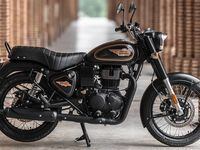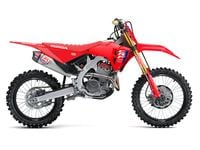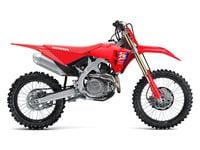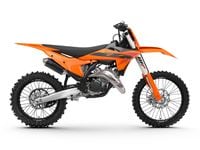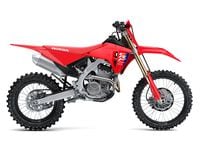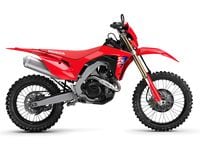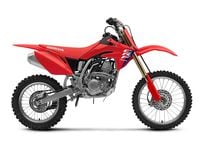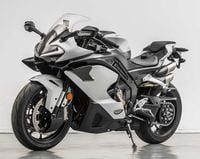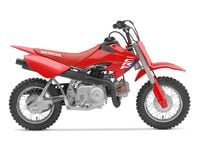Are we excited about Husqvarna's updated Enduro model lineup? Of course. Which is why we are taking a peek at the Euro-spec offerings here, ahead of the official U.S. unveiling, which is coming soon. Stay tuned for that announcement.
Husqvarna recently announced its 2017 Enduro model lineup a couple of months prior to the traditional time slot around the Intermot motorcycle show in Cologne, Germany. This new line of Husky models are big news because they have received a lot of updates in both the chassis and engines.
The new 2017 bikes are lighter, more powerful, and more refined. The chassis are lighter, more compact, and feature higher torsional rigidity and reduced flexional stiffness. Though that might sound contradictory, in reality it was logically achieved by increasing the size of the backbone tube and reducing the diameter of the lower-cradle tubing. The higher torsional rigidity improves the precision of the steering response and the predictability of handling at speed and under full-power acceleration, while the superior longitudinal flexibility makes the bike more responsive and lighter to handle on the twisty sections of the course.
New, is the cast-aluminum swingarm and the seat-supporting subframe constructed from composite materials. In total, the new chassis is almost five pounds lighter. The suspension is new, as well, with a fully adjustable Xplor 48 fork and shock both from WP and both offering around 12 in. of travel.
Also contributing to lower overall weight on each model, the engines have been refined in an effort to make them lighter and more compact. This evolution was applied to both the three two-stroke units and the four 4-stroke models. The 2-strokes come in 125, 250, and 300cc displacements. The bore and stroke measurements have remained unchanged at 54 x 54.5mm, 66.4 x 72mm, and 72 x 72mm, respectively.
TX 125 Two-stroke
The TX 125 unit features a new piston, new cylinder with completely new power valve, new induction system based on the latest Mikuni TMX 38mm flat-slide carburetor, improved cooling, a lighter crankshaft teamed to a heavier alternator rotor to reduce vibration, an altered transfer chamber volume, and improved inertia for smoother power delivery. No power figures were released, but Husky claims that the TX 125 is more powerful and more tractable than the 2016 edition. The TX 125 is kick-start only. The claimed dry weight is 203 pounds.
TE 250/TE 300 Two-strokes
The TE 250 and TE 300 2-strokes have undergone similar refinements to the TX 125 to attain a higher level of performance and reliability. Additionally, they have a counter balancer that should greatly reduce vibration felt by the rider. Claimed dry weights are 223 and 226 pounds respectively for the TE 250 and TE 300. Both feature electric starters powered by a lithium ion battery.
FE 250/FE 350/FE 450/FE 501 Four-strokes
The 4-stroke units in the FE family have undergone an even more impressive transformation. While they all retain the same bore and stroke measurements as before, and valve trains. The FE 250's bore and stroke measure 78 x 52.3mm with DOHC and four valves, and a 12.8:1 compression ratio; FE 350 is 88 x 57.5mm, has DOHC and four valves with a 12.3:1 c.r.; FE450 is 95 x 63.4mm, with a single cam and four valves and an 11.8:1 compression ratio; the mighty FE 501 has 95 x 72mm dimensions, SOHC and four valves with an 11.8:1 c.r. All are fed by a 42mm Mikuni throttle body.
Thermodynamics have been refined in an effort to obtain a broader torque curve and higher peak power. This has been achieved through a revised (straighter) inlet port and a more efficient exhaust system. Finger-cam followers, the DOHC valve trains, and rocker cam followers in the SOHC valve trains now have ultra-low friction DLC (diamond like carbon) coating. Crankshafts remain of the pressed together type with plain bearings for higher durability and higher rigidity and stability. Rods have been shortened in all engines. But the main modifications involve the revised interior layout of all components in order to make the engines more compact and lighter.
For example, the FE 250 engine now revs to almost 13,000 rpm, is 20 millimeters shorter, and tips the scale at only 61 pounds. The FE 250 weighs in at 233 pounds without fuel. All 4-stroke engines feature counter balancers and an electric starter.
Styling has been updated, too. With a leaner and more aggressive look. Pricing on these new models has yet to be confirmed, and we expect them to be released this fall. So, stay tuned for more information.
/cloudfront-us-east-1.images.arcpublishing.com/octane/SOIT46WP2FHGZKS4I6ATFSF5EM.jpg)
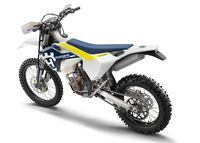
/cloudfront-us-east-1.images.arcpublishing.com/octane/STM6ATBCFZFOPIRSLD6DTW37EM.jpg)
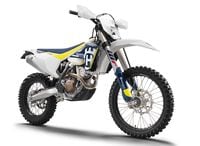
/cloudfront-us-east-1.images.arcpublishing.com/octane/IIMYKU5M3NFZDB32LLXR5QLQ3E.jpg)
/cloudfront-us-east-1.images.arcpublishing.com/octane/KORYHV3RQJFFJF7BQ2IRB2VFQU.jpg)
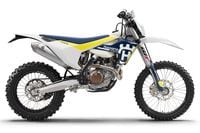

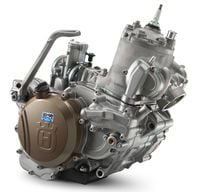
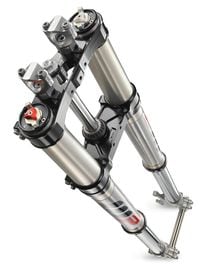

/cloudfront-us-east-1.images.arcpublishing.com/octane/N575KB7BDZDPPJBRLZRG2ANHKI.jpg)
/cloudfront-us-east-1.images.arcpublishing.com/octane/T77HXRXV4NGKDNZODMSEIBRXPE.jpg)
/cloudfront-us-east-1.images.arcpublishing.com/octane/NKMM7V2P3BCSXAV6J56FKK67OU.jpg)
/cloudfront-us-east-1.images.arcpublishing.com/octane/SWQRQV27DNFA7LXGFI7FNFNGOQ.jpg)
/cloudfront-us-east-1.images.arcpublishing.com/octane/GYEXUJBV5JGQLLZNXO7KRVSTEY.jpg)
/cloudfront-us-east-1.images.arcpublishing.com/octane/MCWUSJJVJVG45P7QQG3WOXZR54.jpg)
/cloudfront-us-east-1.images.arcpublishing.com/octane/AJ4EFPH2CRDURDAB5LPEA2V2NE.jpg)
/cloudfront-us-east-1.images.arcpublishing.com/octane/LSDHIL22SZAFFPYLKP5ZXLJSIY.jpg)
/cloudfront-us-east-1.images.arcpublishing.com/octane/SH46HIOX4RELXLXF6AE3SFGH4A.jpg)
/cloudfront-us-east-1.images.arcpublishing.com/octane/JUZ52WFWLJGMNH7PGZNOKP3MUY.jpg)
